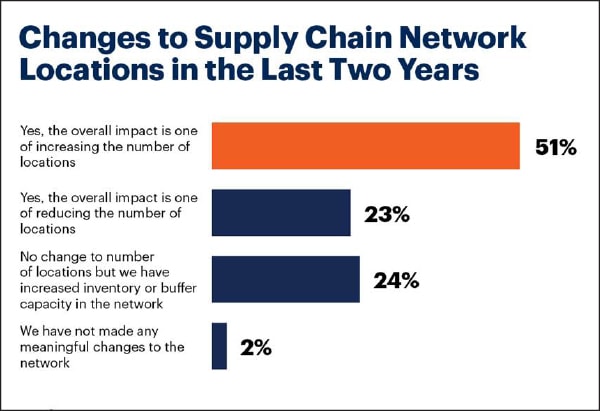Supply Chain Leaders Reconfigure Distribution Networks

Given everything that has transpired across the globe over the past two years, supply chain leaders are evaluating and executing changes to their supply chain/distribution networks as well as their sourcing and manufacturing strategies.
That’s the key takeaway from a new Gartner survey, which polled 403 supply chain leaders during Q2 2022 to gauge how factors including supply constraints, inflation, sustainability goals, and national industrial policies have impacted the strategies of chief supply chain officers (CSCOs).
With their supply chains facing enormous pressure, CSCOs are adapting their networks to fit this new environment. Many are making changes to the scope and scale of their supply chain networks (see chart).
- 74% of CSCOs made changes to the size and number of locations in their supply chain network in the past two years.
- 51% of respondents say they increased the number of locations while 23% say they reduced the number of locations.
Many CSCOs are also switching up regional distribution.
- 28% of respondents now describe their network as a hybrid regional model—a combination of local or regional elements in a global supply chain network.
- This is closely followed by global models with regional final assembly (23%) and local-for-local networks (22%).
Shifts are also afoot for CSCOs whose supply chains have a China presence, as well as those operating in Asia-Pacific (APAC) markets.
- 95% of respondents are evaluating or executing changes to their China sourcing and manufacturing strategy; 55% of those have already acted on their plans.
- 60% of respondents based in APAC view their home region not only as a supply base but as an end market.
- 40% of global respondents consider APAC a supply base as well as an end market.
